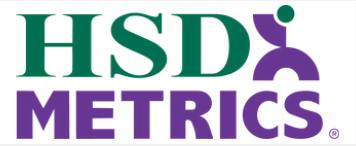Each year, employee health—both mental and physical—is a top topic of conversation in the HR space. Employers and employees are starting initiatives to address the health concerns that affect workplace productivity and efficiency, and now, they’re considering the educational goals of their employees as well.
Mental Health Concerns
According to a study conducted by Willis Towers Watson (NASDAQ: WLTW), stress is the greatest mental health concern faced by American employees. Employee stress comes from a variety of sources in the workplace, but the No. 1 cause of employee stress is understaffing. This stress ultimately leads to lower employee productivity levels, decreased quality of work and a sense of anxiety. Often, employees carry this stress throughout the workday and into evening hours. Most American employees say that it is challenging to not reminisce on career stress even when they are at home, making it difficult to relax.
Physical Health Concerns
Employees can experience a range of physical health concerns associated with stress that include headaches, low energy, insomnia, tense muscles and increased heart rate. Additionally, back pain, carpal tunnel syndrome and eye strain often plague employees who sit long hours at a desk working on computers.
Employers who encourage their employees to come to them when they feel stressed or strained not only develop a better working relationship, they can also help their employees find the root of their stress and make actionable steps toward feeling their best.
The American Psychological Association has several tactics for coping with stress that employers can share with their staff.
Stress and Employee Workload
The strain of an unbalanced workload can upend even the best employee’s day-to-day.
Whether it’s the inability to take a break during the day or feeling unsupported by managers and colleagues, the disconnect between employee expectations and actual workload can cause irreparable rifts in employee satisfaction. Solid employee retention comes from improving and balancing your employees’ workloads. Across the many industries we service with ExitRight surveys, we’ve found some telling results about how former employees–regardless of industry–talk about their workload-related qualms.
When workload is a contributing factor to employees leaving their role, one common theme is that employees don’t feel heard.
Employees are their own advocates in the workplace. But when the help they need goes unanswered for and acknowledgment of their hard work isn’t given, the residual stress is enough to drive them away from your business and into a new role elsewhere.
Below are examples from exit interviews in which workload was a primary reason for leaving.
“I had consistently asked for backup and cross-training and suggested a bunch of process improvements in order to alleviate some of the stress that I personally and my team as a whole faced and there was just never enough people because we were never fully staffed. There are certain times of the year that it is super stressful for the team, and although we can be prepared, there are better things that could be done from a systemic standpoint that are never taken into account.”
“Yes, the workload was unreasonable at first. My manager divided the workload without running stats on the individual workloads. I had to prove to her that my workload was more than my co-workers. She finally realized that, after having someone run stats on our workloads and the workloads became more reasonable. She did not like me pointing this out, but finally realized it.”
“Due to the reduction of resources over the past few years, everyone was asked to do more with less. When the facility offered a retirement package to reduce overhead, they let almost 1000 years of experience walk out the door within a few months of the package offering. That left a gaping hole for everyone who tried to do a good job to fill.”
What Do Your Employees Wish They Could Tell You?
The best way to learn the stressors of your employees is to ask them: What is the source of your stress? Is it situational? Is there an issue at work or at home? Do you feel paralyzed looking at your todo list?
Face-to-face feedback between an employee and the manager is ideal. But if you are a professional who improves work climate for an entire system, unit, or organization, you can begin with fact-based data. Use surveys with targeted purposes such as new hire feedback or stay surveys. Exit interviews also provide a wealth of information on the subject of workload. Well-designed questionnaires and interviews with external norms provide a steady flow of information and solutions.
If you worry that your employees feel undue stress due to increased workload and are losing satisfaction in their jobs, it can be difficult to arrive at meaningful solutions. By listening to your employees and through survey-guided development tools, you can keep your finger on the pulse, leaving nothing to assumption.
Whether you want to focus on one department or conduct interviews organization-wide, HSD Metrics® has a full platform of engagement, exit and stay surveys targeted toward improved business performance and productivity. Contact us online today or call 877-439-9315 to learn more.


